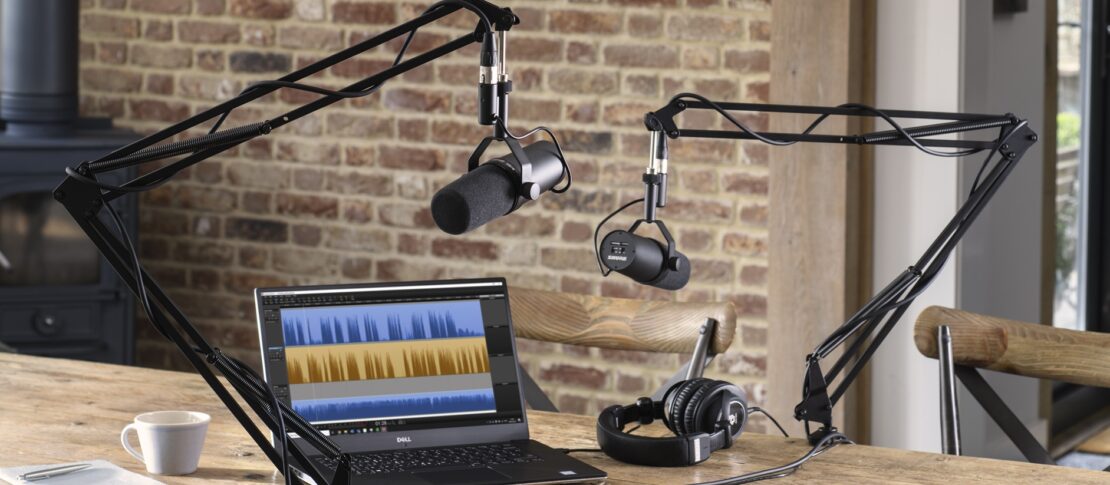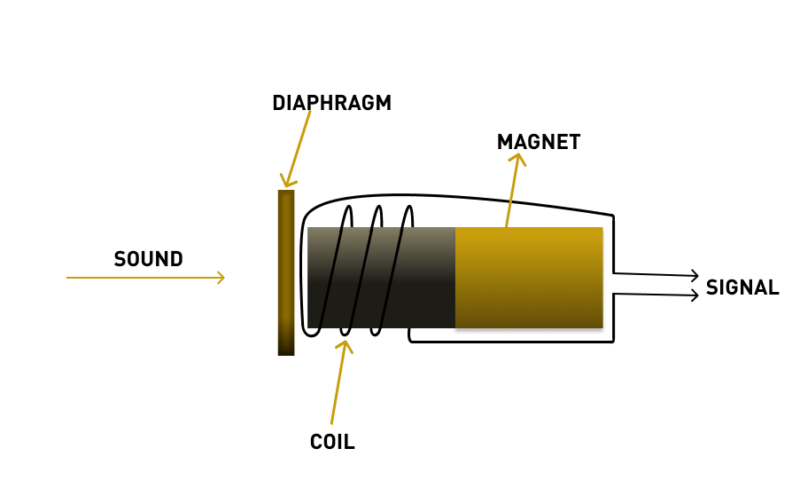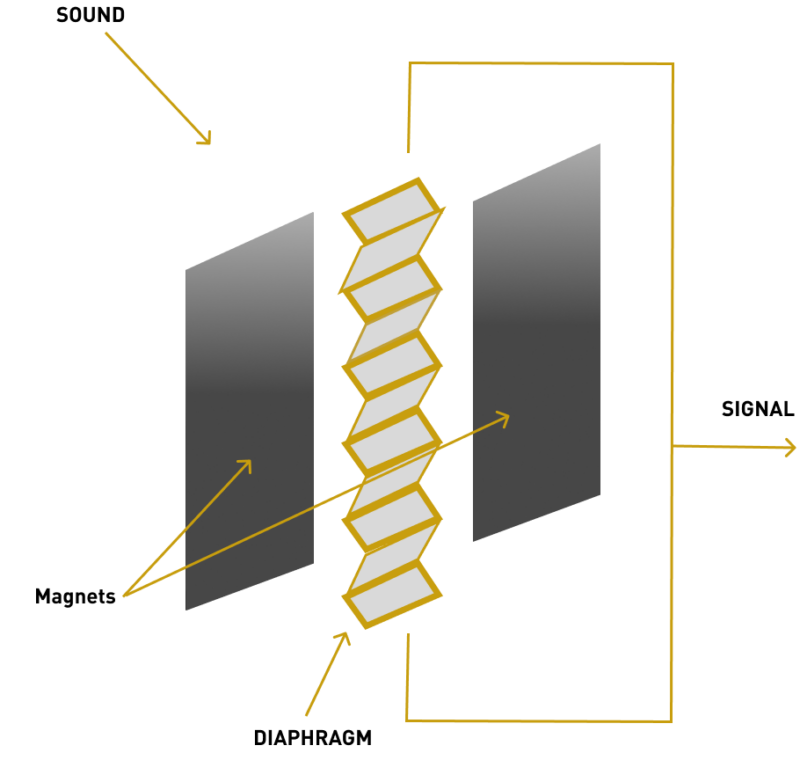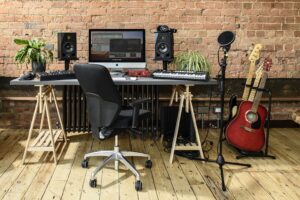
A Beginners’ Guide to Microphones
In the blog, we typically talk about all things studio monitors and related topics, but this time, let’s take a look at the other end of the signal chain in a recording process.
Have you ever wanted to record vocals, an instrument or any other sound source but didn’t know which microphone to use? In this article, we will tell you everything you need to know about microphones to get started. We walk you through the most relevant types of microphones in the studio context, the referring transducer principles, their characteristics and when to use which.
Let’s start with the different types of microphones:
Dynamic Microphones

Application: bass drums, snares, guitar amps, (live) vocals, brass instruments and field recording
Dynamic microphones are very durable, can resist high sound pressure levels, and pick up little background noise, as common designs often have a cardioid directivity pattern. They are therefore not only applicable in the studio context but also for live music. Dynamic mics are also a great choice for field recording, as they can handle loud sounds without distorting. If you want to record loud sound sources like explosions, engines, or amplified instruments, dynamic mics are your best friend.
Condenser Microphones

Application: hi hats, acoustic instruments, overheads, cymbals, grand pianos, woodwinds and brass.
For more delicate sounds, ambient noises and quiet soundscapes, you may want to choose a condenser mic instead. Condenser microphones are more sensitive than dynamic ones which is why they capture a wider range of frequencies and dynamics. This makes them a great choice for vocal recording, to really showcase a singer’s characteristic voice. However, if you are working in noisy surroundings or have an acoustically untreated room then a dynamic mic could be the better choice.
One important requirement for their use is that they need a power source. The so-called Phantom Power supplies electrical power to the condenser mic and is typically provided by audio interfaces, mixers, or standalone phantom power supplies. But be careful – you should only activate Phantom Power when your connected device needs it.
Ribbon Microphones

Application: guitar cabinets, choirs in spacious environments, room mic
Ribbon microphones are a type of dynamic mic. They are renowned for their classic, vintage sound quality. They feature a figure-eight polar pattern, meaning they pick up audio from both the front and back, while rejecting sounds from the sides.
Compared to dynamic and condenser microphones, ribbon mics are generally more fragile and less capable of handling high sound pressure levels. Typically, not the first microphone you should get to start your recording journey, but a good ribbon mic can become the “secret weapon” in your arsenal to capture a performance with an extra bit of character.
Accessories
Here are a few more things to consider when it comes to microphones. As interesting as they are by themselves, you still need some more stuff to connect them to audio equipment, put them in the right position, etc.
Cables
You typically use balanced cables. The most common type of balanced cable used in professional audio is the XLR cable. These cables have three pins (male or female) and are designed to carry the balanced audio signal from the microphone to the recording device or mixer. Balanced cables help minimize noise and interference over longer distances, making them ideal for studio and live sound environments where audio quality is crucial.
Interface
These days, you typically record and edit audio with a DAW on your PC. You need an audio interface to connect your microphone to your computer and as a power source for some microphones (phantom power). Interfaces have a limited number of internal amplifiers for your mics. Choose your mic/interface combination wisely and keep in mind that some microphones need more gain than others.
Pop filter
Plosives are the strong bursts of air that occur when pronouncing certain consonants like “p” and “b.“. When these sounds hit the microphone’s diaphragm directly, they can cause unwanted low-frequency pops and thumps in the recording, known as plosive distortion or popping. Use a pop filter for your microphone as it helps to reduce or eliminate popping sounds.
Stand
When recording with a microphone, you will usually use a mic stand. It provides stability by avoiding unwanted movement, keeps your hands free and reduces external vibrations.
Conclusion
Every mic has different characteristics, and you need different mics for different applications. For instance, recording vocals with no room treatment and/or background noise, a dynamic mic is a safe choice. If you are recording vocals in a good room or instruments with great dynamic variations, a condenser microphone may be the better option.
When it comes to recording vocals, there is no one mic that sounds good with every voice. Specific microphones are often used in certain settings because of their distinct character. It is not uncommon that engineers and musicians have favorites that they like to fall back on. All voices are different, so try to find the mic that works best with your voice. It might not be the most expensive one.

